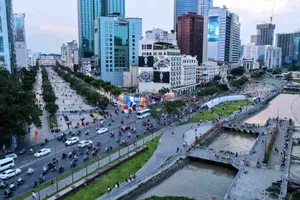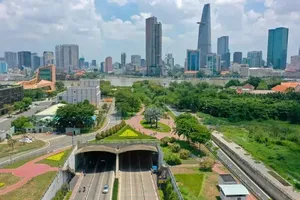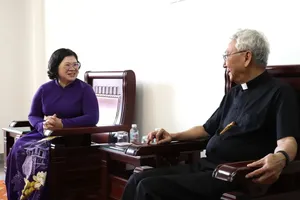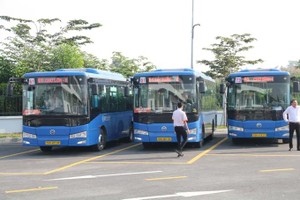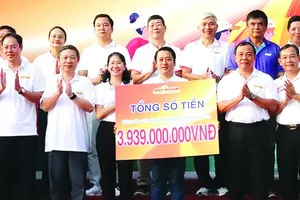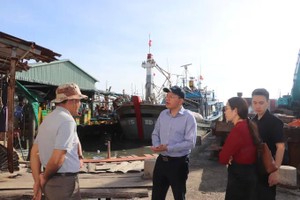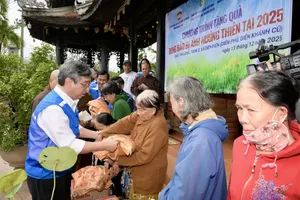Starting June 1, Ho Chi Minh City began charging fees for waste collection, transportation, and treatment, with rates set specifically for each area under the Decision No. 67/2025/QD-UBND (Decision 67). A reporter from SGGP interviewed Director Nguyen Toan Thang of the city's Department of Agriculture and Environment, to discuss the details of this policy.

The concept of "Pay-as-You-Throw" (PAYT), where households are charged for waste disposal based on the amount they generate, is a powerful tool to promote waste classification at the source. This encourages residents to reduce their overall waste and, more importantly, to separate their recyclable and organic waste from general refuse.
According to Director Nguyen Toan Thang, Ho Chi Minh City has long applied a volume-based pricing system for waste collection. Under Decision No. 38/2018, service fees were calculated based on the amount of waste generated (VND/kg), and the newly issued Decision 67 continues this approach. Therefore, charging for waste collection by volume is not a new practice.
Over the past five years, the city has had ample time to implement and refine this system. When classifying waste at the source, the average volume of waste per household—or per waste-generating entity—is determined through consensus among residents, local authorities, and collection units. This collaborative process helps ensure transparency and fairness in how fees are assessed.
Decision No. 67 has specific instructions on determining the volume of waste to calculate the service price. For households, when waste classification has not been implemented, the price for waste collection and transportation that a household must pay has been calculated and converted based on the average volume of waste generated per capita according to standards and the average population of a household according to current statistical reports. Therefore, households will pay the same price for waste collection and transportation services according to the area without having to determine the volume of waste.
Specifically, a household in Thu Duc City and districts must pay VND84,000 a month while their peers in Hoc Mon, Nha Be, Can Gio outlying districts have to pay VND80,000 monthly and residents in Cu Chi and Binh Chanh districts are charged VND76,000 a month excluding VAT.

When the city implements the program of waste classification at source according to the Law on Environmental Protection in 2020, local authorities will organize statistics and re-determine the average volume of waste generated excluding recyclable and hazardous waste to calculate household waste fees at the price including collection and transportation services.
Accordingly, the highest waste collection fee is VND666 per kg in Thu Duc City and several districts, while the lowest is nearly VND600 per kg in Binh Chanh and Cu Chi suburban districts. For waste-generating in government agencies, organizations, businesses, and industrial zones, local authorities will collaborate with collection units and waste producers to gather data and calculate the average waste volume, which serves as the basis for pricing.
Regulations allow for multiple methods to measure and estimate waste volume. Local authorities may agree to use various types of bags or containers for storage, which can then be converted into volume estimates after waste classification.
The Department of Agriculture and Environment has recently collaborated with the People's Committee of Thu Duc City, along with various districts, departments, and agencies, to draft a project for classifying domestic solid waste at its source in the city. The draft outlines a plan to categorize domestic solid waste into three groups including reusable and recyclable waste, food waste, and other domestic solid waste. This classification will follow a timeline aligned with environmental protection infrastructure and waste treatment technologies, as guided by the Ministry of Agriculture and Environment.
This year, local authorities will assess the volume of food waste generated, begin its classification, and evaluate the program's effectiveness to gather insights and expand implementation to other waste groups in the area.
Waste classification at source and conversion of treatment technology to incineration for electricity generation are two solutions to reduce polluting domestic solid waste. The volume of domestic solid waste generated in the city is currently about 9,800-10,500 tons a day. Waste is collected and transported to waste treatment plants operating in the city's two solid waste treatment complexes, including Tay Bac Treatment Complex in Cu Chi District and Da Phuoc Treatment Complex in Binh Chanh District.
To meet the goal of treating all domestic waste with advanced technology and achieving 100 percent recycling by 2030, the Department of Agriculture and Environment, in collaboration with the Department of Finance and other relevant agencies, has proposed two key solutions. First, they are encouraging investor participation in a new domestic solid waste treatment project using the public-private partnership (PPP) model, with a capacity of 2,000 tons per day at Tay Bac Complex in Cu Chi District. Second, they are prioritizing the upgrade of treatment technologies at existing domestic solid waste facilities across the city.
